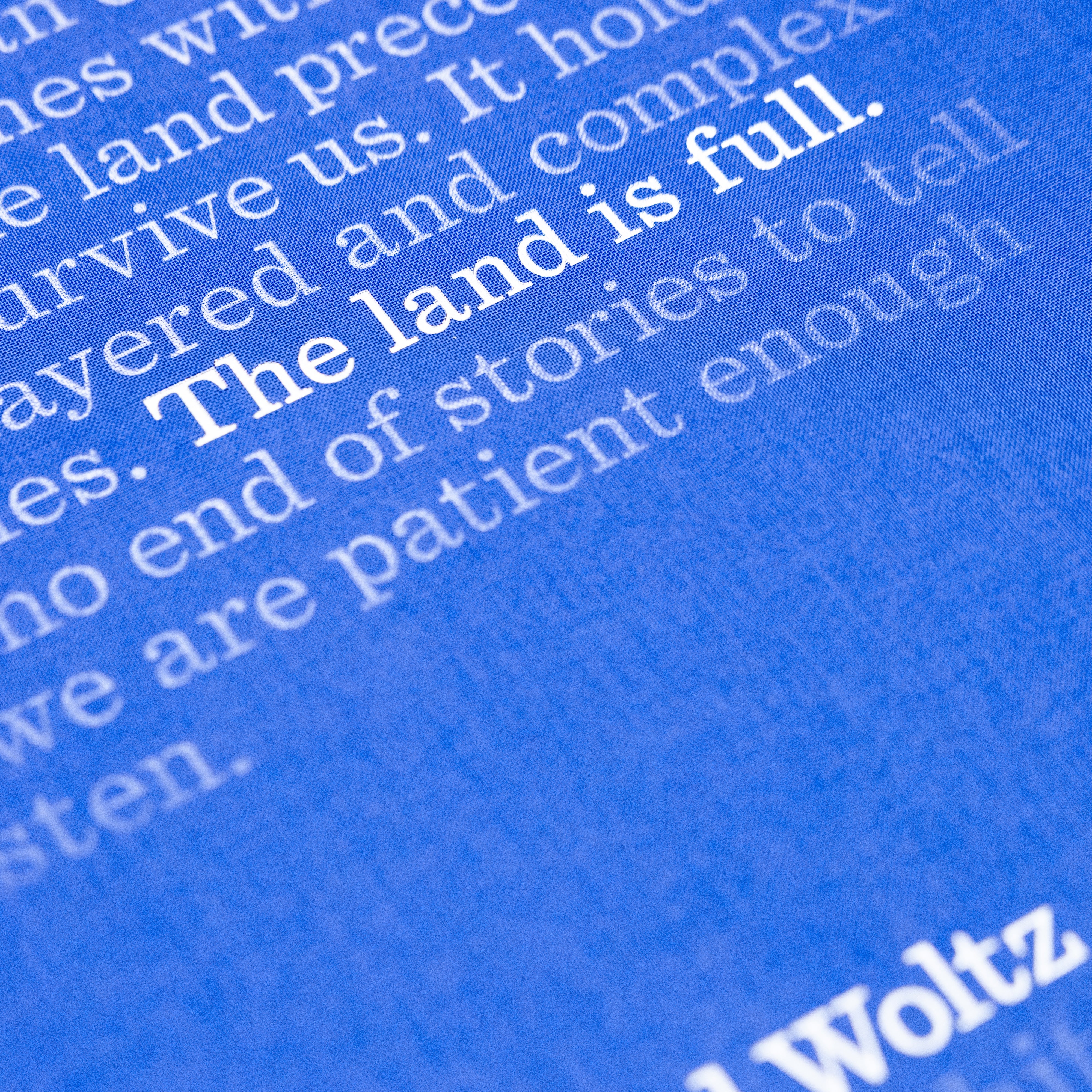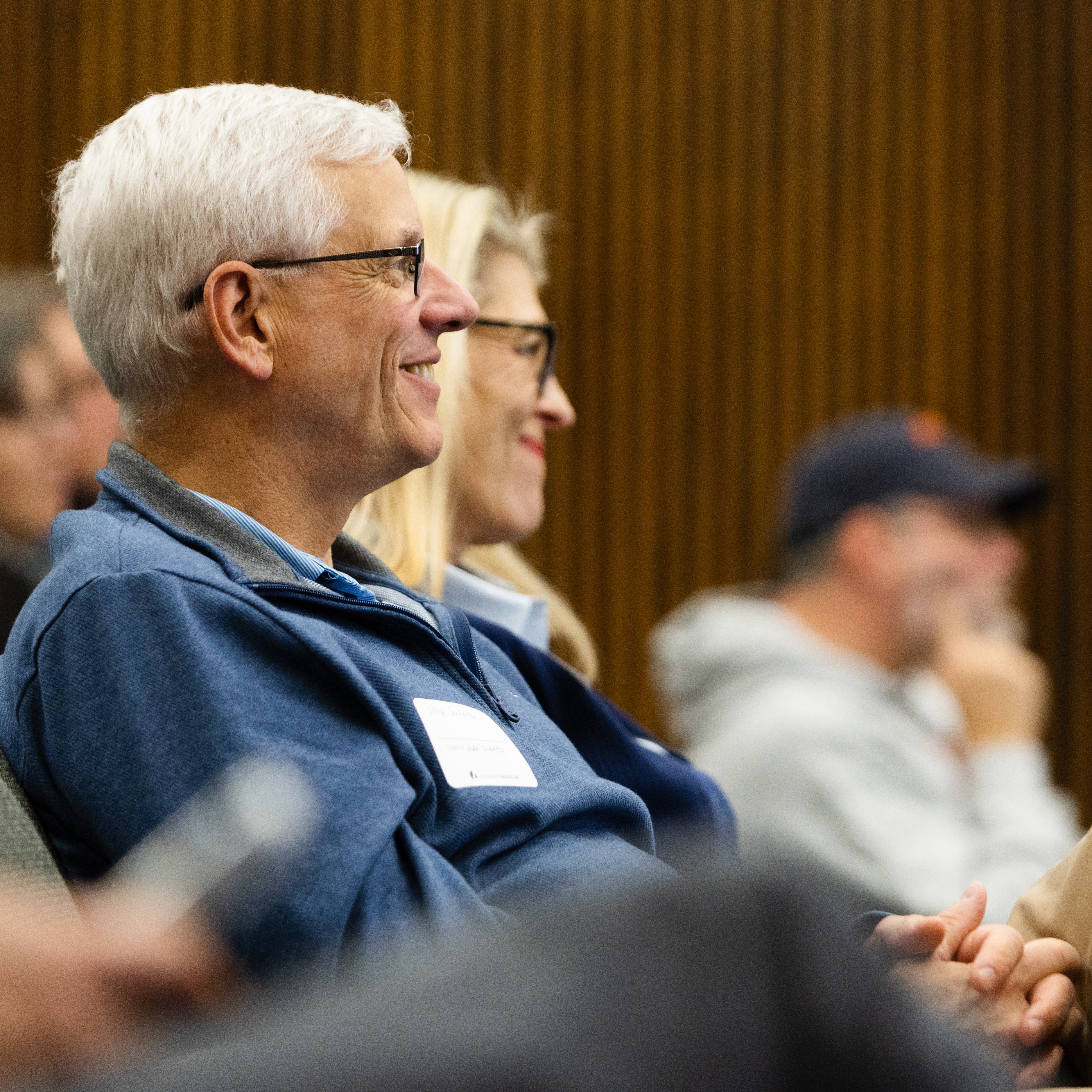
A Vision for a Biophilic Region: Charlottesville and Albemarle County Lead the Way
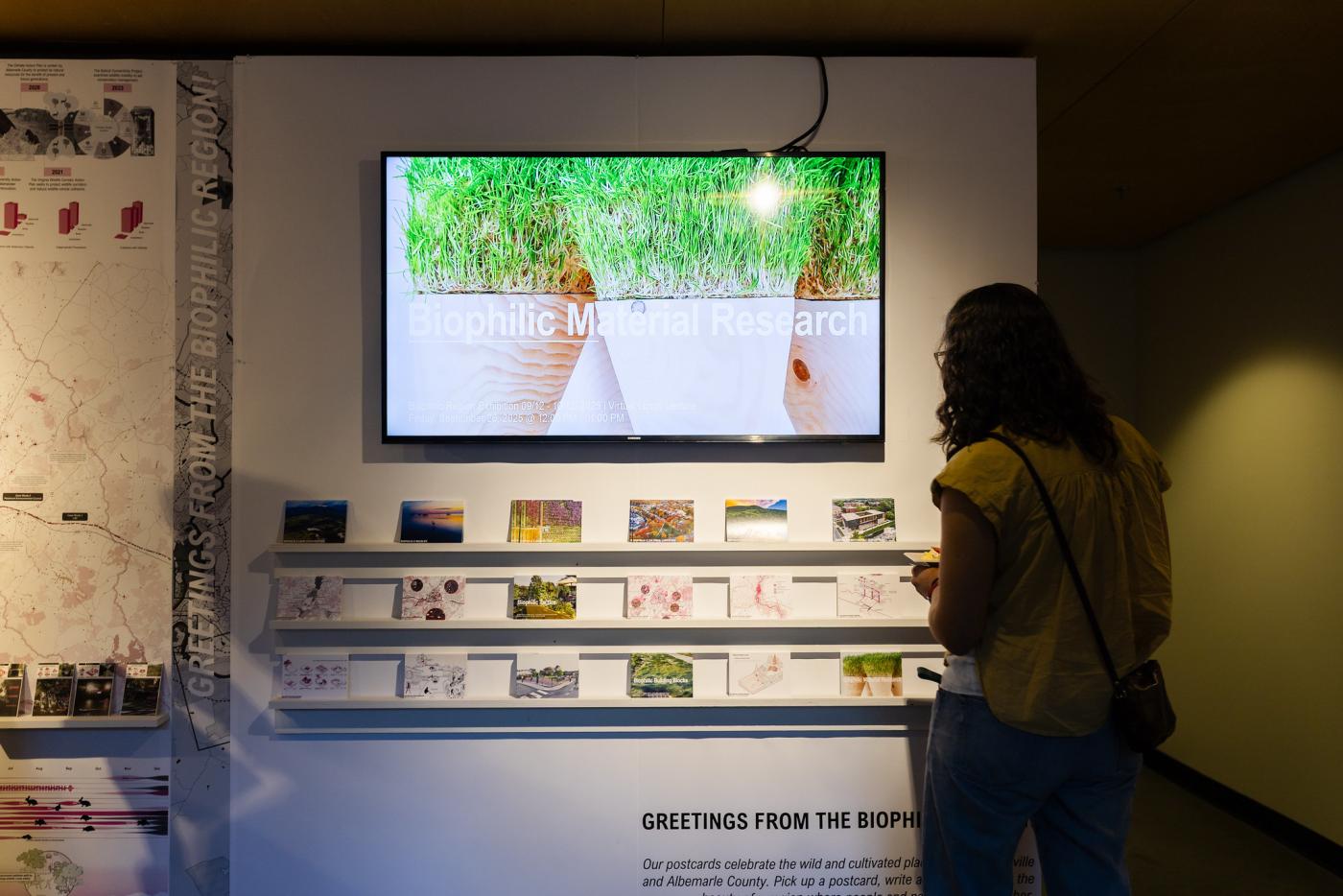
At the School of Architecture’s recent opening of Biophilic Region Charlottesville-Albemarle County: A Vision for a Nature-Connected Future, Associate Professor Mona El Khafif illustrated what it takes to “move little mountains.” In her combined roles as curator, convener, engaged citizen, and faculty member in the Departments of Architecture and Urban + Environmental Planning, El Khafif organized an extensive exhibition and advocacy effort that brings together A-School students and faculty, regional biodiversity advocates, city and county officials, and park planners to envision Charlottesville and Albemarle County as the world’s first designated Biophilic Region.
The exhibition and its opening event arrive at a pivotal moment. In his 1984 book Biophilia, biologist Edward O. Wilson introduced the concept of biophilia as “the intensely emotional affiliation of human beings to other living organisms.” Wilson argued that a connection to nature is vital to human well-being—an idea that has since challenged designers and planners to integrate natural elements into buildings, neighborhoods, and cities. His impact resonates locally as well: in 2010, Wilson received the Thomas Jefferson Foundation Medal in Architecture, awarded jointly by the University of Virginia and the Thomas Jefferson Foundation.
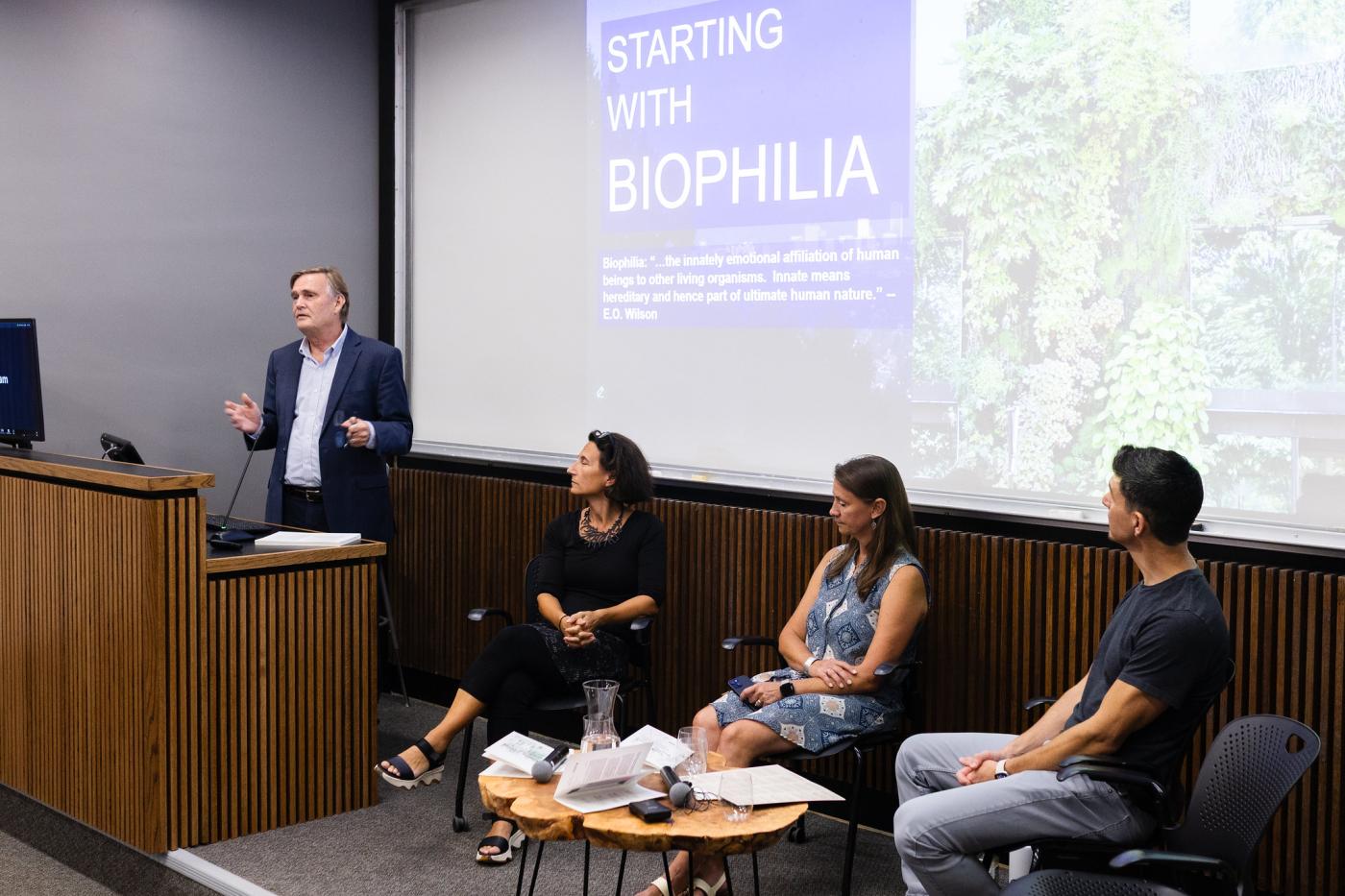
Building on Wilson’s theory, Professor of Urban + Environmental Planning Timothy Beatley founded Biophilic Cities in 2013. The organization's network now includes 36 cities worldwide—including San Francisco, Washington, D.C., Toronto, and Singapore—that are committed to redefining urban environments as multispecies habitats. Through global collaboration, Biophilic Cities' network allows cities to share best practices and demonstrate how conserving and celebrating biodiversity directly enriches urban life.
Until recently, Charlottesville was missing from that list. This absence sparked the curiosity of El Khafif and others working at the intersection of design, planning, and ecological advocacy—including Christine Putnam, Vice-Chair of Albemarle County’s Natural Heritage Committee (NHC), and Kristel Riddervold, Director of the Office of Sustainability for the City of Charlottesville. They were each asking: why not Charlottesville? El Khafif, who serves on the NHC with Putnam, took that question one step further as the framework for her Fall 2024 Urban Strategies course (ARCH/PLAN 5614): why not imagine a biophilic region that encompasses both the city and the county?
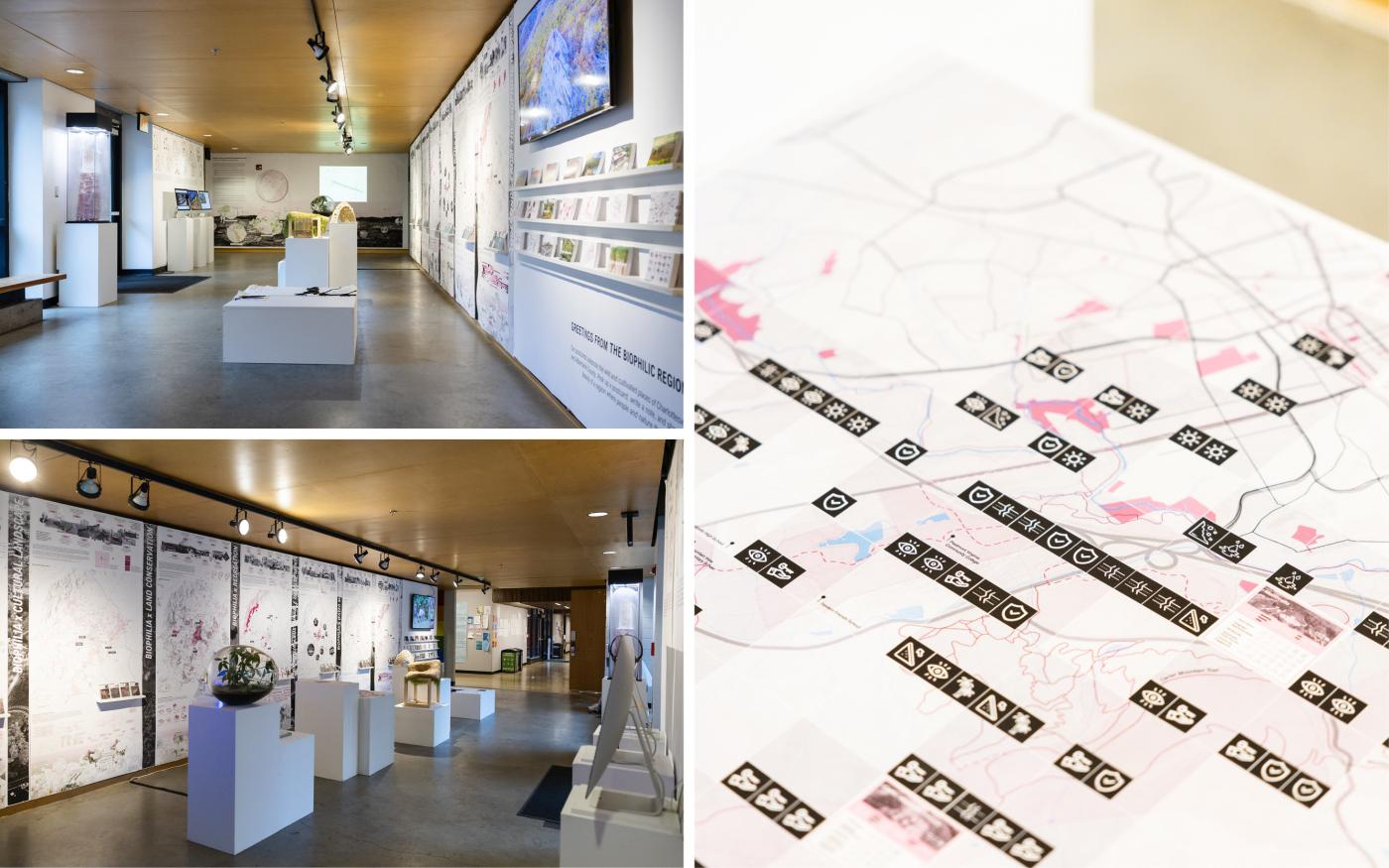
El Khafif and her students conducted a regional asset analysis and explored the area’s biophilic potentials through seven themes selected with input from NHC members—recreation, water management, land conservation, agriculture, sustainable development, cultural heritage, and wildlife. The course included guest lectures by A-School alum Colin Curley (BS Arch '11), a landscape and architectural designer at the NYC-based Field Operations, who spoke about the firm’s urban biophilic projects, and Tim Beatley, who discussed the history and evolution of Biophilic Cities.
The outcome of the students’ efforts was a collection of richly detailed maps and drawings with innovative design proposals and future visions for the Charlottesville-Albemarle ecosystem. Putnam and Tim Padalino (MUEP ‘11), Chief of Parks Planning for Albemarle County Parks and Recreation, attended the final review in December 2024 and agreed that the students' ideas needed to be shared with local leaders and the public.
With support from a Jefferson Trust grant and curatorial assistance from Urban Strategies students Katherine Shi (BS Arch ‘25), Julia MacNelly (MLA ‘25), and Joyce Fong (MLA ‘25), El Khafif developed the Biophilic Region Charlottesville-Albemarle County exhibition, which opened last month. The show features work from her studio course alongside projects by students and faculty across the School of Architecture—all aimed at designing a more sustainable, multi-species future.
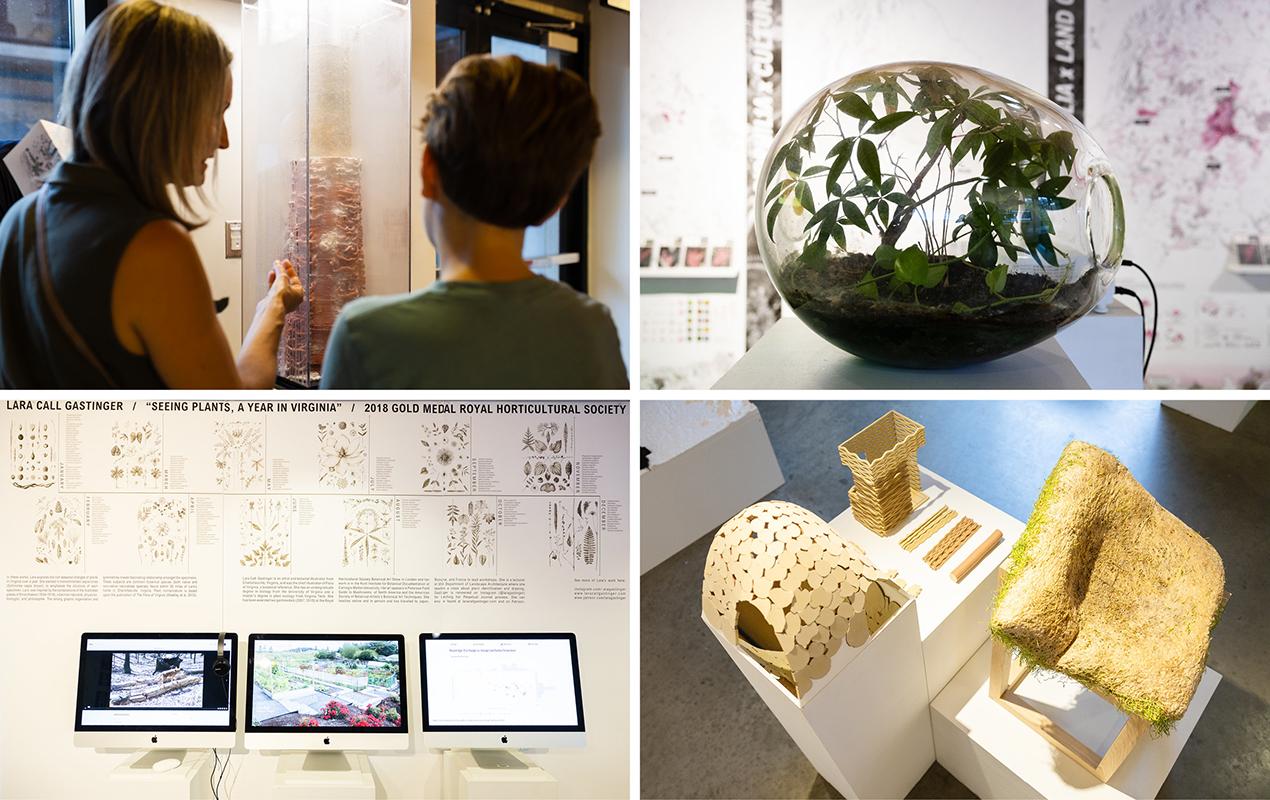
The exhibition illustrates what residents already know: Charlottesville and Albemarle County possess many qualities of a biophilic place—extraordinary biodiversity, extensive parks and trails, strong conservation organizations, and a long history of environmental stewardship. Equally important are the human networks across the university, city, county, and community groups that have been working for decades to protect and connect people with nature.
The biophilic region initiative El Khafif has been orchestrating is less about inventing something new than about recognizing, celebrating, and strengthening what is already here. In many ways, the biophilic region designation functions as a collective affirmation: a way to recognize that this is a place where daily life is immersed in nature and to remind residents of their responsibility to respect, conserve, and champion that relationship for the future.

A major milestone came in April 2025, when the City of Charlottesville formally applied to and was accepted into Biophilic Cities' network. Tim Beatley presented Kristel Riddervold with the CIty of Charlottesville’s official Biophilic Cities certificate at the opening of the exhibition. At the event, El Khafif, Beatley, Putnam, Riddervold, and Padalino participated in a panel presentation that connected the audience to the origins of the biophilic region effort, highlighted the many layers of collaboration, and showcased the myriad ways biophilic planning is a priority for both the city and county. With Albemarle County’s Board of Supervisors now considering partnership as well, momentum is growing toward establishing the world’s first biophilic region.
The Biophilic Region initiative demonstrates that building a nature-connected future begins with recognizing the wealth of ecological and social assets already present. Charlottesville and Albemarle County are not starting from scratch; they are building on decades of environmental stewardship, collaboration, and innovative thinking. As this region steps onto the global stage through Biophilic Cities' network, it offers a model for how communities can foster resilience, well-being, and biodiversity—proving that when people and nature thrive together, the results can be transformative.
Exhibition Contributors
Biophilic Cities: Timothy Beatley and JD Brown
Before Building Laboratory: Katie MacDonald and Kyle Schumann
Computational Tectonics Lab: Ehsan Baharlou
James Barnes,
Karen Firehock
Lara Gastinger
Jennifer Roe
Barbara Brown Wilson
Bev Wilson
Woody Wingfield, AeroWingVA LLC
ARCH/PLAN 5614 Urban Strategies (2024) Students; Instructor: Mona El Khafif
LAR 6010 Graduate Landscape Architecture Foundation Studio I (2018–2024) Students; Instructors: Leena Cho and Matthew Seibert
ALAR 8020 Design-Build Research Studio (2024–2025) Students; Instructor John Comazzi

